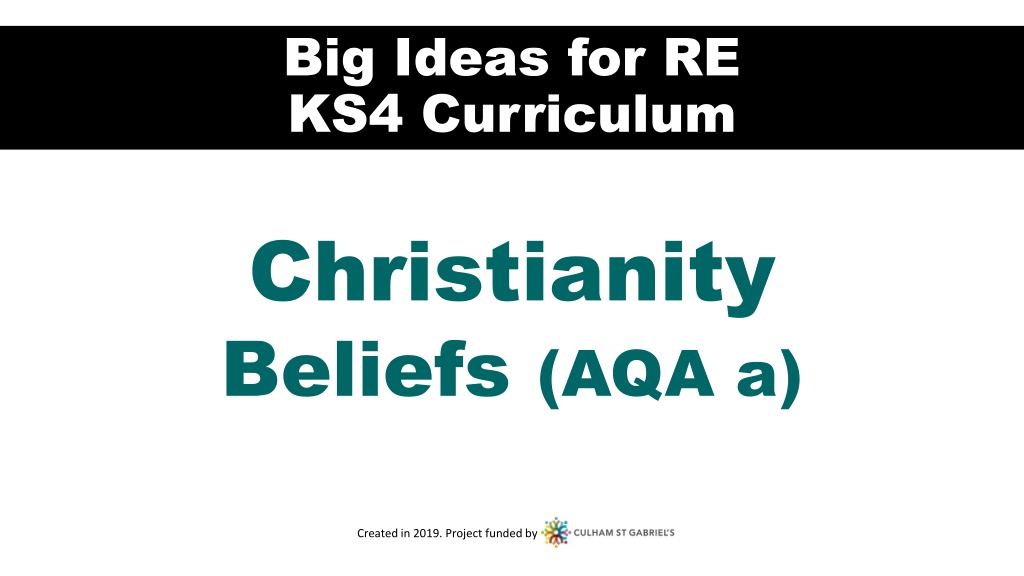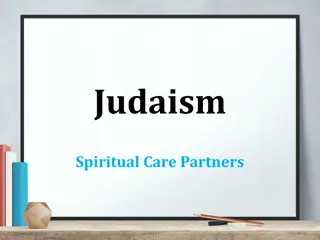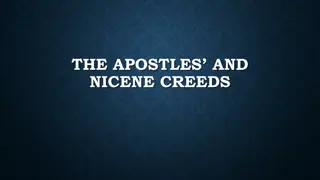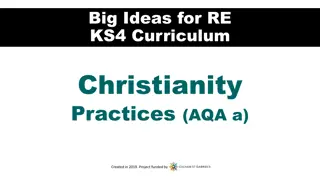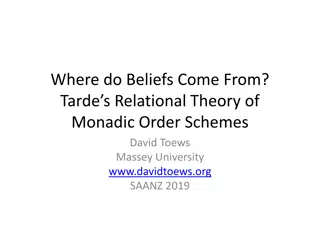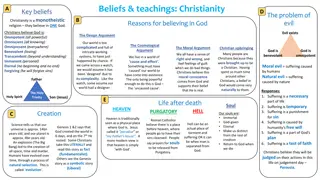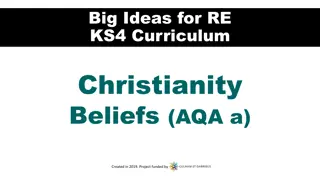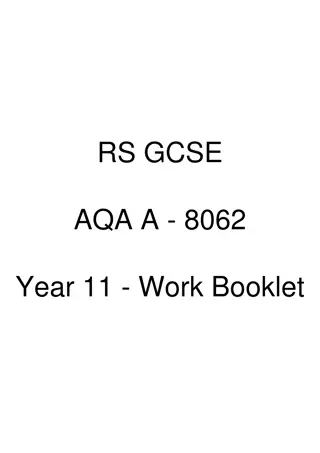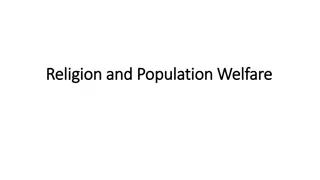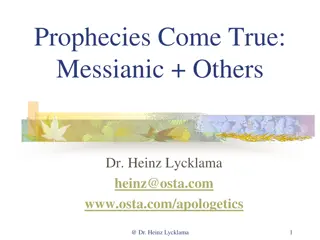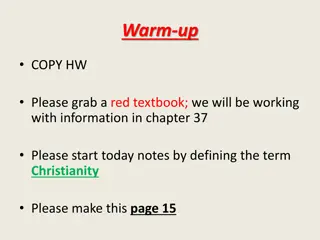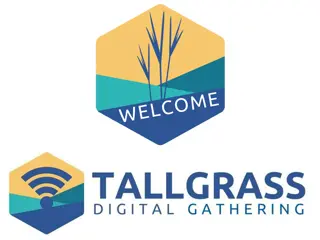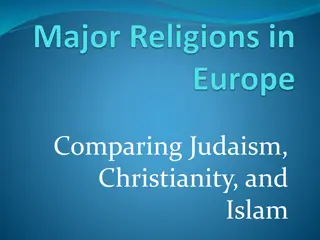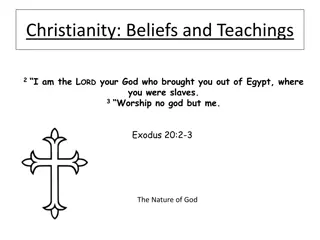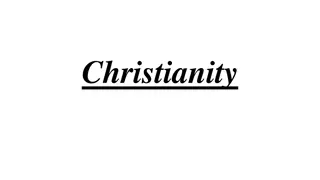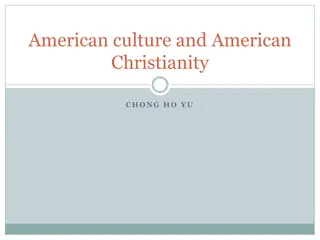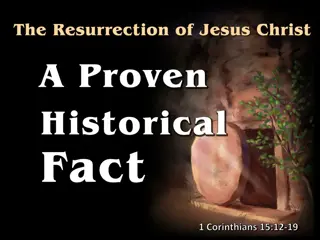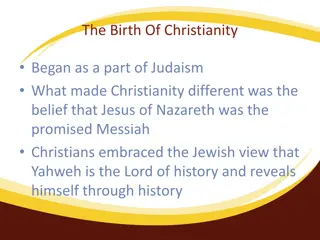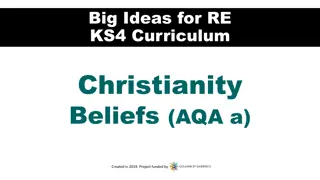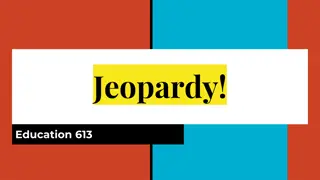Exploring Christianity: Beliefs and Messianic Concepts
Dive into the core beliefs of Christianity, focusing on topics like the Trinity, Jesus as the Messiah, and the concept of the Messiah in both traditional Jewish and emerging Christian perspectives. Discover the historical and theological roots that shape Christian thought and understanding.
Download Presentation

Please find below an Image/Link to download the presentation.
The content on the website is provided AS IS for your information and personal use only. It may not be sold, licensed, or shared on other websites without obtaining consent from the author. Download presentation by click this link. If you encounter any issues during the download, it is possible that the publisher has removed the file from their server.
E N D
Presentation Transcript
Big Ideas for RE KS4 Curriculum Christianity Beliefs (AQA a) Created in 2019. Project funded by
1 1- -2: 2: Why is Christianity called Why is Christianity called Christianity ? Christianity ? From the spec the incarnation and Jesus as the Son of God the crucifixion, resurrection and ascension the oneness of God and the Trinity: Father, Son and Holy Spirit. BIG IDEAS LEARNING CONTEXT: recap timeline- Jesus death and Christian beliefs about his resurrection. Info on ecumenical councils. Formulation of Nicene creed. BELIEFS: Trinitarian beliefs, that set Christianity apart from Judaism Learning outcomes: Jesus as a new sort of messiah ( Christ ) Trinitarian beliefs as established by ecumenical councils Link Trinitarian beliefs (Jesus as God) to Jesus as messiah/ Christ RESOURCES 1 1st century Roman world 1 passion timeline story cards 1 passion timeline biblical text cards 1 passion timeline COMPLETE 2 Brief history of the Trinity
Lesson 1 1) Starter: 2 minutes in pairs to brainstorm everything students know about Christianity. Looking for.. Jesus as Jewish? Trinity? Messiah? 2) Show map of 1st century Roman world. Identify where and when the events take place. 3) Hand out 1stcentury Roman world sheet. Split class into 8 groups. Ask 2 groups to read about the political climate, 2 groups to read about the cultural, 2 groups to read about the religious and 2 groups to read about the philosophical climate. 4) Ask each group to record two aspects of what they have read and share with the class 5) Look at the traditional Jewish idea of messiah (next slide). Give students 1 minute to sketch this person. Discuss the meaning of the word messiah (on PPT) and write notes. 6) Hand out Passion timeline story cards (cut into cards): pairs or groups re-order the sequence of events. Either find images on Google or create own images to represent events. 7) Add biblical text to each event using passion timeline biblical text cards 8) Recap political scene. What did Jews hope their messiah would do? 9) Look at a new idea of messiah (on PPT). Sketch this person. Jesus followers saw him as a new kind of messiah. How is he different to the mainstream Jewish idea of messiah? 10) Go back to brainstorm- anything to add in light of leaning?
Messiah Traditional Jewish Traditional Jewish understanding of the understanding of the messiah messiah descendent of King David observes the Jewish laws a righteous judge a great military leader a human (not divine, divinity would be offensive to God) vanquish the enemies of Judaism in battle bring peace to the world rebuild the temple of Jerusalem Literally anointed one in Hebrew Anointed with oil = one chosen by God Meaning for ancient Jews= a saviour In Greek: Christ
Messiah Emerging Christian Emerging Christian understanding of the understanding of the messiah messiah Descendent of King David Observes the Jewish laws A righteous judge A wandering preacher All human but also all divine Taught peace and forgiveness for enemies Took on the sins of humanity by dying on the cross Ascended to heaven Left behind teachings that humans could follow to follow Jesus to heaven Literally anointed one in Hebrew Anointed with oil = one chosen by God Meaning for ancient Jews= a saviour In Greek: Christ
Lesson 2 1) Recap timeline of Jesus trial, death and resurrection: groups re-order passion timeline . Show images or biblical text from lesson 1, groups assign to an event. 2) Recap: Can anyone explain the difference between Jewish and Christian views of messiah? 3) Return to initial brainstorm results (lesson 1). Did anyone have Trinity ? 4) Display 10 or so foundational religious ideas, such as God is one , Krishna is an avatar of Vishnu , angels record your good and bad deeds , etc. give groups 1 minute to discuss where they think religious ideas come from. Listen to answers. 5) Find an image online of the Nicene Council (325 CE). Ask the class to guess what is happening. Explain that the idea of Jesus as God s son was established AFTER Jesus death at meetings called Ecumenical councils . This idea is not in the bible. Foundational Christian ideas came from councils such as these (as well as revelation, prayer, etc) 6) Complete brief history of the Trinity worksheet. Ask groups to design a symbol to represent the Trinity showing three parts, one whole. 7) Display the Nicene Creed. This is spoken aloud at church services today. Ask the class why it is called Nicene ? 8) Answer the question: why is Christianity called Christianity ?
